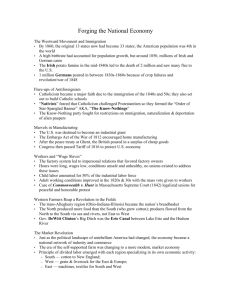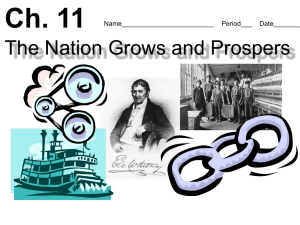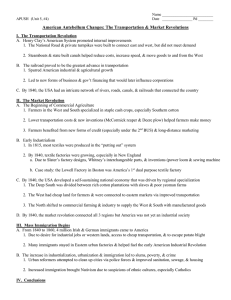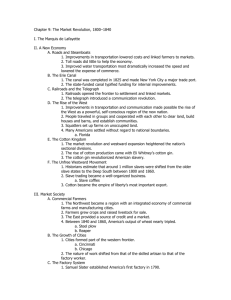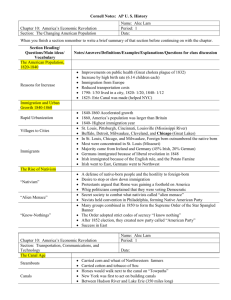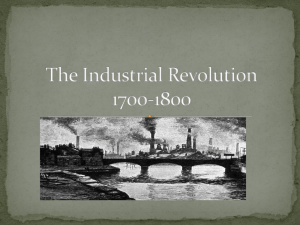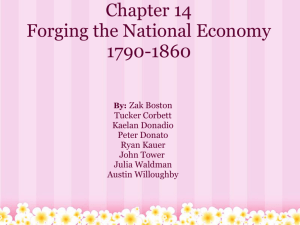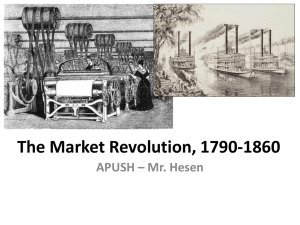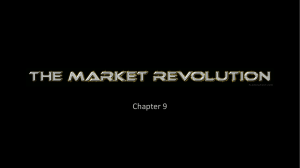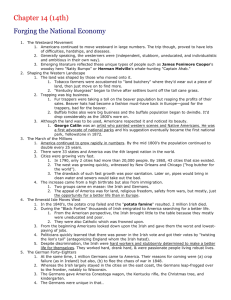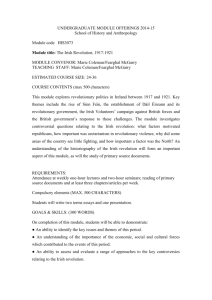The Market Revolution
advertisement
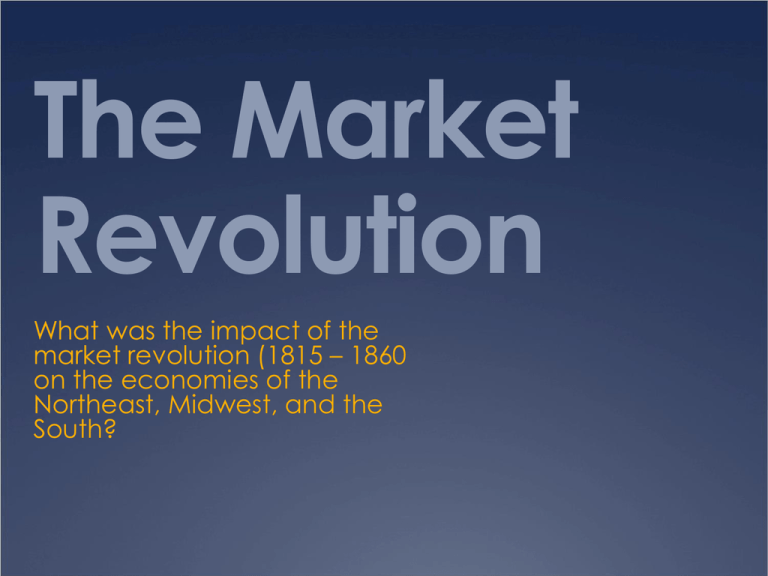
The Market Revolution What was the impact of the market revolution (1815 – 1860 on the economies of the Northeast, Midwest, and the South? What is the Market Revolution? Industrial Revolution Transportation Revolution: roads, canals, steamboat, railroad Change from subsistence farming to large-scale cash-crop farming Regional specialization: East (industry), West (livestock), and South (agriculture) Continental (national) and interdependent economy Immigration: Irish and German (U.S. need for labor) Westward expansion Urbanization, growth of cities Immigration: The Irish 1840’s and 50’s immigration skyrockets. Why? “Land of freedom and opportunity” Abundance of land in US Disease Mid 1840’s, potato famine strikes Ireland ¼ of country dies of disease/hunger “Black Forties” Period when many Irish died/emigrated to other countries Most lived in cities, not enough $ to move west Jobs: “NINA” = No Irish Need Apply Canal workers—Erie Canal Hatred against Irish who take jobs from “Native” Americans for “stealing” jobs due to low wages Powerful political force: patronage, voting—Democrats (Tammany Hall, NYC) Largest group of immigrants from 1830 to Civil War Nativism “Nativists” Born in America, hated foreigners. Why? Fear of losing culture, jobs, etc. Religious Fears Many Irish were Catholic, fear they would infringe upon Protestantism Order of the Star Spangle Banner, “Know Nothing Party” Political party that hoped to restrict immigration and naturalization laws Connection? Inventions and Inventors Samual Slater “Father of Factory System” Memorizes plans for machine Eli Whitney: Created Cotton Gin, 50 times more effective at separating seeds Impacts: Demand for cotton sky rockets demand for more slaves (when slavery had been dying out) Southern cotton northern textile factories clothes Inventions Jefferson Embargo Act 1807 (TJ) Due to embargos, Americans encouraged to “Buy American” and “Wear American” Treaty of Ghent in 1815 (ending War of 1812… negotiated by?)opens trade, GB floods US with cheap products US response? Tariff of 1816, first perotective tariff Who wil like this? Who will hate this? Interchangeable Parts: Invented by Eli Whitney, machines produce identifical parts, if a part breaks it can be easily replaced John Deere: Invented steel plow that broke soil Cyrus McCormick: mechanical mower-reaper allowed goods to be harvested more efficiently Factory life Factory life Long hours, low pay, child labor, “whipping rooms” Lowell Girls: Farmers’ daughters hired to work in factories (assembly line, mass production, urbanization) Significance of factories: Change in manufacturing from home to factories (urbanization) 1840: MVB establishes max 10 hour work day for federal employees Strikes were illegal and rare, but did happen Commonwealth v. Hunt: MA Supreme Court Decision: Labor unions legal, so long as non-violent or subversive More symbolic than immediately significant Transportation Cheap and efficient carriers were imperative Western expansion, need to tap resources west, trade Interdependence Lancaster Turnpike Connected Philadelphia to Lancaster, 62 miles Toll road spurs construction of other roads by 1832, 2,400 miles of roads connecting major cities Robert Fulton Steam Engine, now boats could go in any direction (up current) Gov. Clinton’s Big Ditch Erie Canel 7 years to build 363 miles from Buffalo to Albany Hudson River to Great Lakes Cost to ship grain fell from $100 - $5; 20 days to six Creation of many cities in NY along canal Intrastate commerce Effects of the Union By Civil War, continental economy had emerged Division of Labor applied on national scale South: Agriculture North/East: Factories West: Livestock
